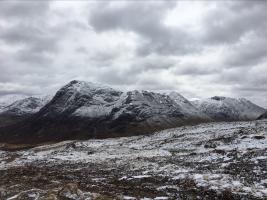Coffee Roasting - Stewart Maclean 28 September 18.00 for 18.30
Thu, Sep 28th 2017 at 6:30 pm - 8:30 pm
Coffee Roasting - Stewart Maclean 28 September 18.00 for 18.30
Here is a link to Counter Coffee Web Site
Coffee Roasting
Following the recent talk to the Club about foraging, the broad theme was continued by a fascinating talk given by Stewart Maclean on the technology of coffee roasting. Speaking to the Club at its Thursday meeting, Stewart explained how he had changed his job from being an accountant – a bean counter as he described it – to being a bean roaster.
His change of profession was a consequence of a lifelong passion for coffee. Reflecting on this enthusiasm, he explained how he had read about the transforming process brought about by roasting coffee beans, and the potential for creating an associated business. The development of artisan coffee production, starting in America, he reported, has spread to England, broadly paralleling the rise of micro-breweries and micro-distilleries. Having recognised the possibility that coffee roasting could be a viable business, Stewart created space in the kitchen to make an initial foray into the marketplace. This was so successful that he was quickly able to commission a small building to house his newly purchased three kilowatt hot-air, Korean-built roasting oven. Since starting his business in late 2015, Stewart reported that he has roasted two tonnes of beans, with some 15 kilogrammes of beans being roasted each day.
Stewart explained that the green bean as harvested has no flavour; it is the roasting process that develops the characteristic flavour of coffee. Initially the pulp in the green bean has to be removed either by being dried, or, alternatively, being washed out. Either process has an influence on the ultimate taste. In the early stage, beans are a pale yellowish colour; the early roasting process initially removes water vapour and changes the beans to a light brown colour. Further roasting (known as the medium roast) helps to caramelise the sugars in the bean, while the final stage – the dark roast at up to 230 degrees Celsius – changes the bean to a dark-brown colour. It’s at this stage that one has to be careful that the beans are not burnt!
An important consideration in creating an attractive product rests on the selection of the area (or areas) in which the beans are grown. As with grapes, many factors influence the ultimate taste. Inevitably, a choice has to be made. In Stewart’s case, he has settled on producers from South-East Asia and South America.
Critical to the assessment of the characteristics of the beans and the roasting is what the experts call “cupping”, essentially the tasting of the final product as it emerges as a cup of coffee. This assesses the acidity of the coffee on the palate, its richness of taste, the aroma, and the residual sensation after swallowing.
To conclude, Stewart provided two of his products for tasting by members: one example from Nicaragua, the other from Java. This created a lively discussion as to their relative merits, together with a number of questions to Stewart about various aspects of producing an acceptable cup of coffee. Advice given included to avoid keeping coffee beans in a fridge – an airtight container is preferable. Surprisingly also, perhaps, the fact that the darker coffee is the less caffeine it contains.
Speaker’s Host Lawrie Orr expressed members’ thanks for a very informative talk, and for the opportunity to put the product to the test.
.jpg)

.jpg)







